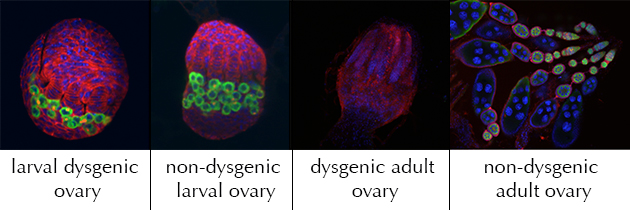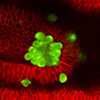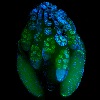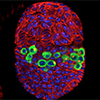Two projects in our lab deal with examples of host-intruder interactions, where the intruder is either located within the genome, in the form of “transposable elements”, or is acquired in the form of the intracellular bacterium Wolbachia. Common to both TE and Wolbachia is that a) they require to be transmitted though the germline, b) they can have deleterious effects on reproduction (in the form of hybrid dysgenesis and cytoplasmic incompatibility, respectively), and c) they can be beneficial for the host (by facilitating genomic change and protection against viruses).
TE activity in the Drosophila germline is regulated by chromatin-based as well as small RNA-mediated (piRNA) mechanisms. Components of the piRNA biogenesis machinery interfere with normal germline development. Similarly, activation of TEs such as the P-element hybrid dysgenesis causes infertility. However, TE activity and reproductive defects are not necessarily correlated. Using classical example of TE activity we are interested in identifying the systemic connection between TE activity and germ line development.
Wolbachia infection has been correlated with a decrease in titer of a variety of disease causing viruses, such as dengue fever. The effectiveness of the antiviral response is closely linked to Wolbachia density, however increased Wolbachia titers can have deleterious effects on host viability and reproduction. To investigate the molecular relationships between virus infection and Wolbachia, we are currently using large-scale RNAi knock-down approaches to identify cellular factors that affect the dynamics of bacterial growth.
Research Areas:
|
|
|
|
|
|







